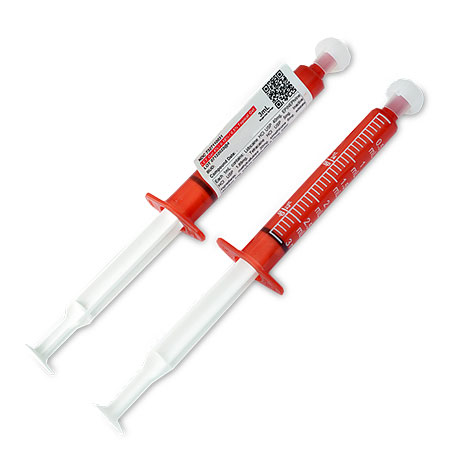Anesthetics
Home » Anesthetics » LET Gel topical anesthetic
Our products
LET Gel Topical Anesthetic
Office-Use Medication
Out Of Stock
LET Gel topical anesthetic – Lidocaine 4% / Epinephrine 0.18% / Tetracaine 0.5% – 3mL syringe. Our LET Gel is dispensed in 3mL unit-dose amber syringes and can be stored at room temperature. Sold in a convenient, light resistant zip bag that contains 10 syringes.
See Also:
- Preparation Type: Non-Sterile
- Delivery: Topical Gel
- BUD: 180 Days
- Size: 3mL Syringe
- Storage: Room Temperature
- Distributed by our 503B outsourcing facility
Carie Boyd Pharmaceuticals LET Gel is a topical, non-sterile, triple anesthetic gel that helps to effectively reduce pain during the suturing of wounds. Its formulation provides rapid and effective anesthetic to tissues, helping reduce the patient’s discomfort. Skin lacerations are a common cause of trips to the emergency department, accounting for over 8% of all visits. LET gel is a preferred anesthetic applied to open wounds prior to suturing.
- Lidocaine 4% – Lidocaine blocks sodium channels which, when applied to skin, prevents local neurons from signaling the brain, blocking the pain response. Onset of numbing is within 4 minutes.
- Epinephrine 0.18% – Epinephrine works as a vasoconstrictor in the superficial tissue bed to assist in control of superficial bleeding and helps to slow systemic absorption of the active ingredients, prolonging the maintenance of an active tissue concentration.
- Tetracaine 0.5% – Tetracaine is a longer acting anesthetic that functions by altering the function of ryanodine receptors that control the distribution of intracellular calcium, blocking the pain response.
We offer LET topical gel in 3mL unit-dose syringes, to hospital emergency departments, urgent care centers, pediatrician offices, and other qualified health care providers. Room temperature storage means providers can have LET gel on hand to use as needed.
Our LET Gel Advantages:
- Fast absorbing and efficient depot anesthesia effect
- Convenient and easy to apply unit-dose syringe, avoiding waste
- Light resistant zip bag containing 10 syringes
- Quick & reliable delivery, always
- Room temperature storage
- 180 days BUD
References:
“A topical lidocaine-epinephrine-tetracaine (LET) gel is the most effective anesthetic for repair of lacerations, says this study from State University of New York at Stony Brook.” Singer AJ, Stark MJ. LET vs. EMLA for pretreating lacerations: A randomized trial. Acad Emerg Med 2001; 3:223-230.
“Painful procedures, such as venipuncture, intravenous (IV) cannulation, intramuscular (IM) injection, laceration repair, and lumbar puncture (LP) are common in pediatrics and cause distress to children and their caretakers. The stress response to pain is associated with metabolic and hormonal changes that are attenuated by local anesthetics… Local anesthetics can be injected; however, topical analgesics, either topical anesthetics or vapocoolant spray can be applied without needles and can reduce the need for physical and chemical restraints. These agents also avoid the tissue distortion that occurs with infiltrated anesthetics…”
Clinical use of topical anesthetics in children, Deborah C Hsu, MD, MEd, https://www.uptodate.com/
“Topical anesthesia is a useful method for pain control, is safe compared to other traditional methods, and offers a satisfactory form of pain relief in relation to infiltration anesthesia and compared to placebo”.
Effectiveness of Topical Anesthetics in Pain Management for Dermal Injuries: A Systematic Review, J Clin Med. 2021 Jun; 10(11): 2522.
Call us (817) 282-9376 to learn more

